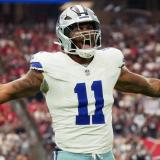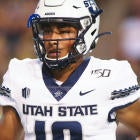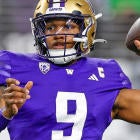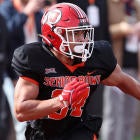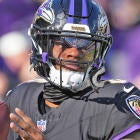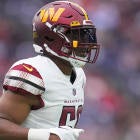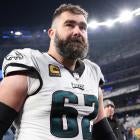In the short time since the conclusion of the 2020 NFL Draft, no team's strategy has been more roundly criticized than that of the Green Bay Packers. Brian Gutekunst and company made perhaps the most shocking move of the first day of the draft when they traded up for Utah State quarterback Jordan Love, then followed that up with a series of puzzling moves on Days 2 and 3.
Reasonable minds can disagree on whether trading up to secure Love as Aaron Rodgers' possible/probable eventual successor a year or two down the line will work out for the Packers in the end, but because of Rodgers' contract situation and skill level, we likely will not get a definitive answer for a while.
What we do know about the Packers' draft is that they strongly prioritized getting better in the run game. The wisdom of that strategy is debatable for several reasons, not least of which is the fact that a run-based attack is just not as likely to be efficient as is a pass-based one. The Packers also just did not really need an upgrade in the run game, where they finished fourth in efficiency last season, per Football Outsiders' DVOA.
The selection of A.J. Dillon is also likely to siphon work away from Aaron Jones -- who has emerged as one of the best backs in the NFL -- and see him replaced on the field with a player who is not nearly as much of a threat in the passing game and thus more likely to tip the defense off to a run play when he's in the game. Adding a blocking tight end in Josiah Deguara is also somewhat puzzling when you consider that the Packers, like most other teams, were more successful when running the ball out of 11 personnel (one running back, one tight end) than out of 12 (one back, two tight ends) last season. Run plays tend to be more successful when the field is spread, not when the line of scrimmage is crowded with extra blockers.
Instead, the moves more likely to positively impact Green Bay's run game are the team's three sixth-round picks, all of which were offensive linemen. Most sixth-rounders don't even end up making the team, but offensive linemen tend to have a stronger effect on rushing performance than either running backs or tight ends, so if any of Jon Runyan Jr., Jake Hanson, or Simon Stepniak does make the team and emerges as either a depth piece or eventual starter, they could end up helping out in the area the Packers seemed to care most about in this draft.
Of course, Green Bay's extensive focus on improving the run game meant the Packers ignored several other areas of need, all of which are more vital to determining overall team success. We'll start with the most-criticized omission.
1. They didn't add pass-catching help
In what was considered the deepest wide receiver class in years, the Packers did not select a single wideout despite having arguably a bigger need at the position than any team in the NFL. The team's non-Davante Adams wide receivers were dreadful last season, and it was widely expected that they would find Adams some help on the outside at some point during this draft.
Instead, Gutekunst justified not selecting a receiver by stating they didn't feel any of the players available to them would be an improvement over the guys currently on the roster. You know, like Allen Lazard, Devin Funchess, and Marques Valdez-Scantling. True superstar receiver types.
Adding another receiver would have been important and helpful not just for Rodgers, but also for Love when he eventually takes over. And it would have the added benefit of freeing up a bit more space for Adams, and for the run game the Packers so heavily prioritized. Forcing opponents to keep defensive backs on the perimeter and out of the box opens lanes for running backs to a far greater degree than adding additional blockers to the line of scrimmage.
2. They didn't find players to stop the run
The Packers' greatest area of weakness last season was actually their run defense, which finished the year 23rd in DVOA. We also saw how vulnerable that defense was to specifically to zone run schemes with quick and powerful one-cut backs when Raheem Mostert gashed them for (approximately) 5,427 yards and 72 touchdowns in the NFC title game.
And yet, the Packers did not add a defensive player until the fifth round of the draft. The player they selected there (Kamal Martin) is a former quarterback-turned-edge rusher-turned linebacker who is coming off a knee injury and who the team's official website notes is likely to contribute only on special teams early in his career. The Packers did add one defensive lineman in the draft, but seventh-round pick Jonathan Garvin is a pure pass-rush specialist who is unlikely to help shore up Green Bay's weakness in the run game.
3. They didn't upgrade at slot corner
As we wrote prior to the draft:
Green Bay invested a lot of money and draft capital in the secondary over the past several seasons, yet still wound up counting on Tramon Williams to man the slot more often than not last season. He did an alright job, for the most part, but he's 37 years old now. "Tramon Williams will handle it" is not a serious plan at slot corner.
Jaire Alexander and Kevin King are outside corners who aren't likely to bump down into the slot all that often. Players like Chandon Sullivan or Josh Jackson could pick up some of the slack, but they're not really slot guys. So, Green Bay would do well to find somebody who can handle that role.
Green Bay did not end up drafting a cornerback at all in this class, and the only defensive back the team added was TCU safety Vernon Scott in the middle of the seventh round.







